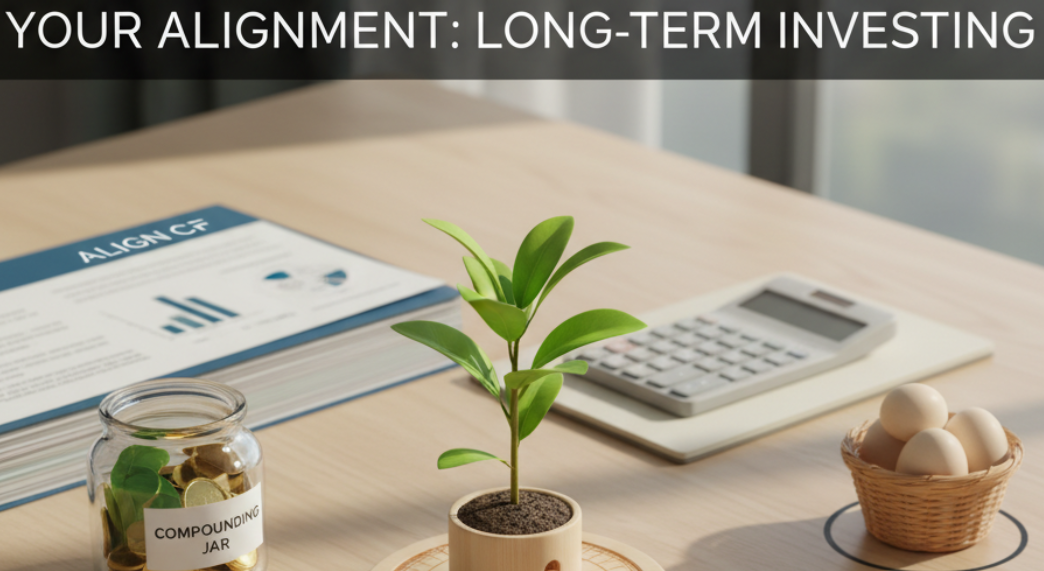A Beginner's Guide to Long-Term Investing
Nov 30, 2025
Investing 2 minutes read

The world of investing can seem intimidating, but it's one of the most powerful tools for building long-term financial security. At AlignCF, we believe your investment strategy should be just that—aligned with your life goals. It’s not about getting rich overnight; it's about a disciplined, long-term approach. If you're ready to take the leap, here's how to start and why a long-term strategy is your best bet.
Step One: Set Your Financial Compass
Before you invest a single dollar, you need a plan. Investing isn't a hobby; it's a tool to achieve your future goals.
- Define Your Goals: What are you investing for? Retirement in 30 years? A down payment on a house in five? Funding a child’s education? Your goals determine your time horizon—how long your money will be invested—which is the foundation of your strategy.
- Establish an Emergency Fund: Never invest money you might need in the short term. We recommend having 3 to 6 months of living expenses saved in an easily accessible, high-yield savings account. This is your financial safety net.
- Assess Your Risk Tolerance: How comfortable are you with seeing your investments go down in value? Younger investors with decades until retirement can typically afford to take on more risk, as they have time to recover from market downturns. Older investors often need a more conservative mix.
The Power of a Long-Term Strategy
The most successful investors aren't those who try to time the market; they're those who embrace a long-term investing strategy. This approach uses time and consistency to your advantage.
Compounding: Your Financial Superpower
The key to long-term success is compounding. This is when your investment earnings generate their own earnings. Think of it like a snowball rolling downhill—it gathers more snow as it goes, growing exponentially faster over time. The earlier you start, the more time compounding has to work its magic. Even small, regular investments can become substantial over decades.
Diversification: Don't Put All Your Eggs...
A long-term strategy requires diversification. This means spreading your investments across different asset classes and different sectors. If one area of the market struggles, your entire portfolio won't be wiped out. For beginners, low-cost, diversified funds are excellent starting points. They allow you to own a small piece of hundreds of companies, instantly diversifying your portfolio.
Consistency is King
Market volatility is a fact of life, but a long-term strategy encourages you to ignore the noise. Use Dollar-Cost Averaging (DCA): invest a fixed amount of money at regular intervals, regardless of the market's performance. When prices are high, you buy fewer shares; when prices are low, you buy more. Over time, this discipline smooths out your average purchase price and prevents emotional, fear-driven selling.
Investing doesn't have to be complicated. By defining your goals, respecting your risk tolerance, and committing yourself to a disciplined, long-term strategy, you can align your money with the future you want to build. Start today—the best time to plant a tree was 20 years ago, and the second-best time is now. 🌱
Categories
Popular posts
-
A Beginner's Guide to Long-Term Investing
Oct 27, 2025 -
The Power of Multi-Asset Investing: Why One Fund Is Never...
Oct 22, 2025 -
The Pillars of a Future-Proof Portfolio: How Multi-Funds Cover Your...
Oct 22, 2025
